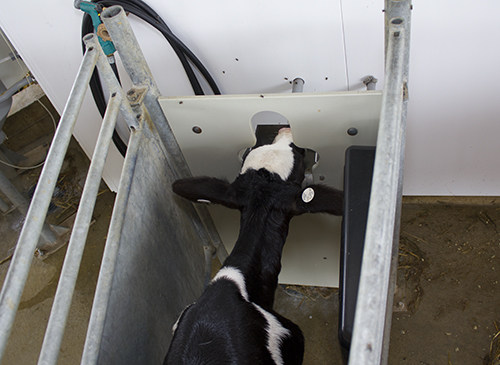
Offering quicker gains, healthier calves and greater labor efficiencies, automated calf feeders have revolutionized antiquated calf systems while. Upon first appearance, the investment seems like it will easily pay for itself, and in many cases it does. However, C.A. Russell, a dairy producer in Texas and California, warned dairymen during a panel at the 2015 Western Dairy Management Conference in Reno, Nev., to pay special attention to building design when installing such systems.
His dairy in Texas built an automated calf feeding system in 2012, and he said they have since struggled with calf health related to ventilation issues. Russell said if he were to do anything over again, it would be to hire a ventilation engineer to help design the facilities instead of losing calves and paying for adjustments. Russell has been working to correct their issues in Texas, and he mentioned that he is committed to making the system successful.
Laura Flory and her husband, who are Virginia dairy producers, built an automated calf feeding system in 2014, and she emphasized the focus on detail that has been necessary to run the facility. "Intense planning, attention to detail and keeping calves' perspective in mind have been key to our auto feeding success," said Flory. Their operation has strict protocols in place to identify calves that are not keeping up with the rest of the group. The farm pulls calves out of the group pens if they are drinking at a rate below 70 percent of their normal drinking speed to evaluate for illness.
For Jeanne Wormuth, a New York heifer raiser, the benefits of the feeding center focuses on labor efficiencies and cost effectiveness. "Group feeding of calves with auto feeders has decreased our costs and improved quality of life," said Wormuth.
Bob James, professor at Virginia Tech and the moderator of the panel, may have had the most applicable piece of advice regarding automated calf feeding systems. He said, "If you want to be cheap with milk replacer or whole milk, this is not the system for you." Across the board, automated feeding centers have the potential to optimize calf growth and farm efficiency, but if not correctly constructed or managed, they can become a liability.

The author was the 26th Hoard's Dairyman editorial intern. She is a senior at Kansas State University in Manhattan, Kan. At KSU, Maggie is double majoring in agricultural communications and journalism and animal sciences and industry. Seiler grew up on a 130-cow registered Holstein dairy in Valley Center, Kan., near Wichita.








